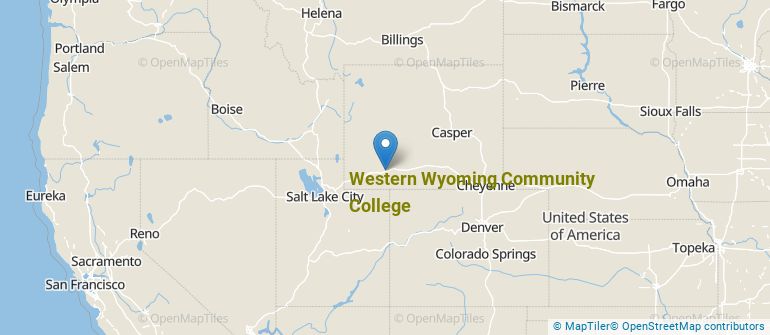 by our College Data Analytics Team
by our College Data Analytics TeamIn its yearly rankings, College Factual analyzes over 2,000 colleges and universities to determine which ones are the best in a variety of categories, such as overall value, quality, diversity, which schools are the best for each major, and much more.
Western Wyoming Community College was awarded 3 badges in the 2025 rankings. The highest ranked major at the school is business administration & management.
Explore the best ranked schools for the programs you are most interested in.
According to College Factual's 2025 analysis, WWCC is ranked #1,467 out of 2,152 schools in the nation that were analyzed for overall quality.
WWCC also holds the #4 spot on the Best Colleges in Wyoming ranking.
See all of the rankings for Western Wyoming Community College.
Western Wyoming Community College has an open admissions policy, so you should not have much trouble being accepted by the school. Still, it is important to fill out the application completely and submit any requested materials, which may include proof that you have a high school diploma or the equivalent.
The student to faculty ratio at WWCC is an impressive 12 to 1. That's quite good when you compare it to the national average of 15 to 1. This is a good sign that students at the school will have more opportunities for one-on-one interactions with their professors.
When estimating how much access students will have to their teachers, some people like to look at what percentage of faculty members are full time. This is because part-time teachers may not have as much time to spend on campus as their full-time counterparts.
The full-time faculty percentage at Western Wyoming Community College is 100%. This is higher than the national average of 47%.
During the 2017-2018 academic year, there were 2,776 undergraduates at WWCC with 918 being full-time and 1,858 being part-time.
| $0-30 K | $30K-48K | $48-75 | $75-110K | $110K + |
|---|---|---|---|---|
| $3,632 | $3,956 | $5,981 | $7,267 | $9,727 |
The net price is calculated by adding tuition, room, board and other costs and subtracting financial aid.Note that the net price is typically less than the published for a school. For more information on the sticker price of WWCC, see our tuition and fees and room and board pages.
While almost two-thirds of students nationwide take out loans to pay for college, the percentage may be quite different for the school you plan on attending. At WWCC, approximately 24% of students took out student loans averaging $5,125 a year. That adds up to $20,500 over four years for those students.
Get more details about paying for Western Wyoming Community College.

See which majors at Western Wyoming Community College make the most money.
Get more details about the location of Western Wyoming Community College.

Contact details for WWCC are given below.
| Contact Details | |
|---|---|
| Address: | 2500 College Dr, Rock Springs, WY 82901 |
| Phone: | 307-382-1600 |
| Website: | https://www.westernwyoming.edu/ |
| Most Popular Majors | Bachelor’s Degrees | Average Salary of Graduates |
|---|---|---|
| Business Administration & Management | 50 | NA |
| Liberal Arts General Studies | 35 | NA |
| Heavy/Industrial Equipment Maintenance | 35 | NA |
| Electronics Maintenance & Repair | 33 | NA |
| Nursing | 31 | NA |
| Other Health Professions | 28 | NA |
| Practical Nursing & Nursing Assistants | 23 | NA |
| Teacher Education Grade Specific | 13 | NA |
| Information Science | 10 | NA |
| Vehicle Maintenance & Repair | 9 | NA |
Online courses area a great option for busy, working students as well as for those who have scheduling conflicts and want to study on their own time. As time goes by, expect to see more and more online learning options become available.
In 2022-2023, 1,390 students took at least one online class at Western Wyoming Community College. This is an increase from the 1,349 students who took online classes the previous year.
| Year | Took at Least One Online Class | Took All Classes Online |
|---|---|---|
| 2022-2023 | 1,390 | 663 |
| 2021-2022 | 1,349 | 567 |
| 2020-2021 | 1,521 | 638 |
| 2018-2019 | 1,602 | 799 |
Learn more about online learning at Western Wyoming Community College.
Footnotes
*The racial-ethnic minorities count is calculated by taking the total number of students and subtracting white students, international students, and students whose race/ethnicity was unknown. This number is then divided by the total number of students at the school to obtain the racial-ethnic minorities percentage.
References
More about our data sources and methodologies.